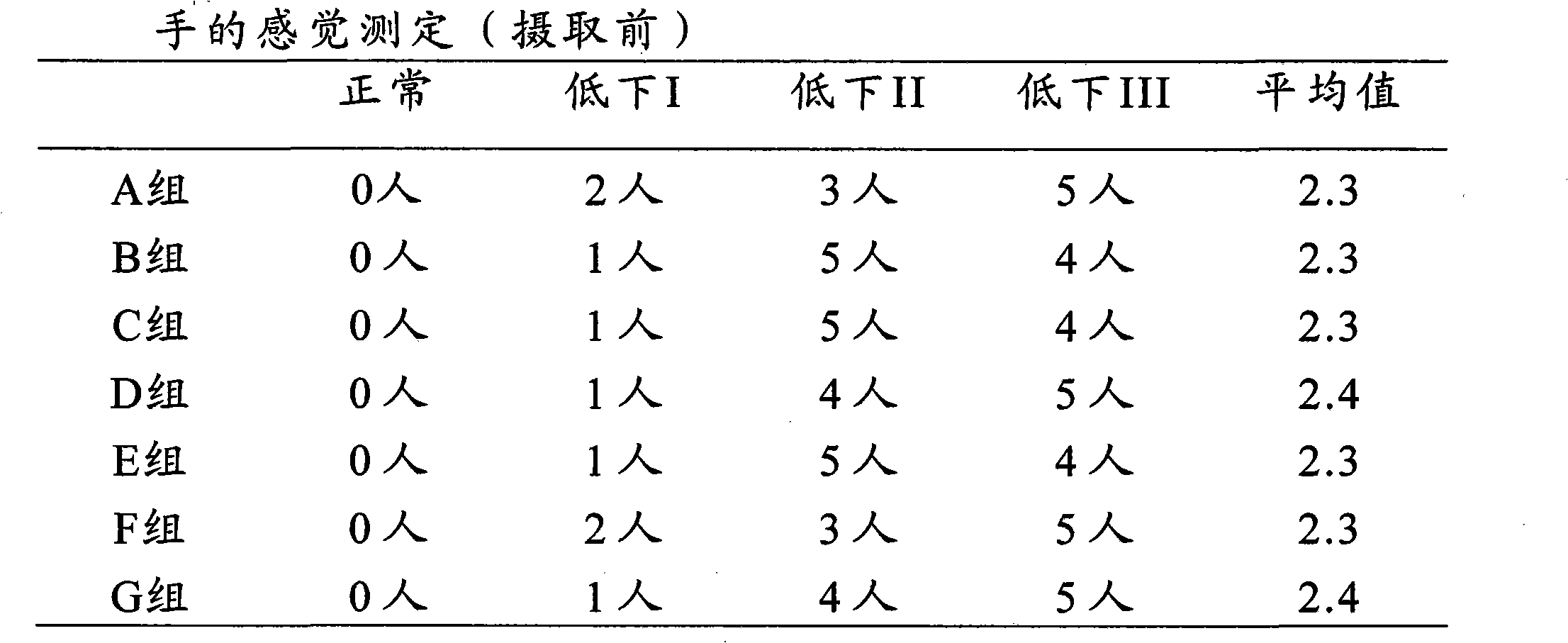Sense-improving agent
An improving agent and sensory technology, applied in skin care preparations, animal feed, additional food elements, etc., can solve the problem of delayed detection of injury, unclear effect of preventing and improving peripheral sensory passivation, and increased burn risk. Advanced problems to achieve the effect of improving passivation
- Summary
- Abstract
- Description
- Claims
- Application Information
AI Technical Summary
Problems solved by technology
Method used
Image
Examples
Embodiment 1
[0027] (Manufacture 1 of phospholipid-containing composition)
[0028] A 25% cream whey powder (manufactured by Corman, SM2) solution was prepared, and 5N hydrochloric acid was added to adjust the pH to 4.5. The solution was left standing at 50° C. for 1 hour to precipitate casein. The precipitate was removed using a filter press, and the resulting aqueous solution was treated with an MF membrane (manufactured by SCT Corporation) with a pore size of 1.0 μm to obtain a concentrated liquid fraction. This concentrate fraction was freeze-dried to obtain a phospholipid-containing composition. This milk-derived phospholipid-containing composition contains 53% lipid, 31% phospholipid, 24% protein, 15% carbohydrate, and 8% ash based on the total solid content, and can be used as the sensory improving agent of the present invention as it is.
Embodiment 2
[0030] (Manufacture 2 of phospholipid-containing composition)
[0031] A 20% buttermilk powder (manufactured by Snow Brand Dairy Co., Ltd.) solution was prepared, and 2N hydrochloric acid was added to adjust the pH to 4.5. The solution was left standing at 45° C. for 30 minutes to precipitate casein. After removing this precipitate using a clarifier, the obtained supernatant was treated with an MF membrane (manufactured by SCT Corporation) with a pore size of 0.1 μm to obtain a concentrate fraction. This concentrate fraction was freeze-dried to obtain a milk-derived phospholipid-containing composition. This milk-derived phospholipid-containing composition contains 62% of lipid, 38% of phospholipid, 15% of protein, 18% of carbohydrate, and 5% of ash based on solid content, and can be used as the sensory improving agent of the present invention as it is.
Embodiment 3
[0033] (production of sphingomyelin 1)
[0034] Protease was allowed to act on a 10% aqueous solution of whey protein concentrate (WPC), and the resulting reaction solution was extracted with a chloroform-methanol (2:1) solution, concentrated, and further extracted with acetone to obtain a phospholipid fraction. The obtained phospholipid fraction was subjected to silica gel chromatography, extracted stepwise with chloroform-methanol solution, and the obtained extract was freeze-dried to obtain purified sphingomyelin. The purified preparation was fractionated by thin-layer chromatography, developed with Dittmer's reagent, and quantified using a densitometer. As a result, the sphingomyelin content was 95.2%. The sphingomyelin thus obtained can be used as a sensory improving agent as it is.
PUM
 Login to view more
Login to view more Abstract
Description
Claims
Application Information
 Login to view more
Login to view more - R&D Engineer
- R&D Manager
- IP Professional
- Industry Leading Data Capabilities
- Powerful AI technology
- Patent DNA Extraction
Browse by: Latest US Patents, China's latest patents, Technical Efficacy Thesaurus, Application Domain, Technology Topic.
© 2024 PatSnap. All rights reserved.Legal|Privacy policy|Modern Slavery Act Transparency Statement|Sitemap



